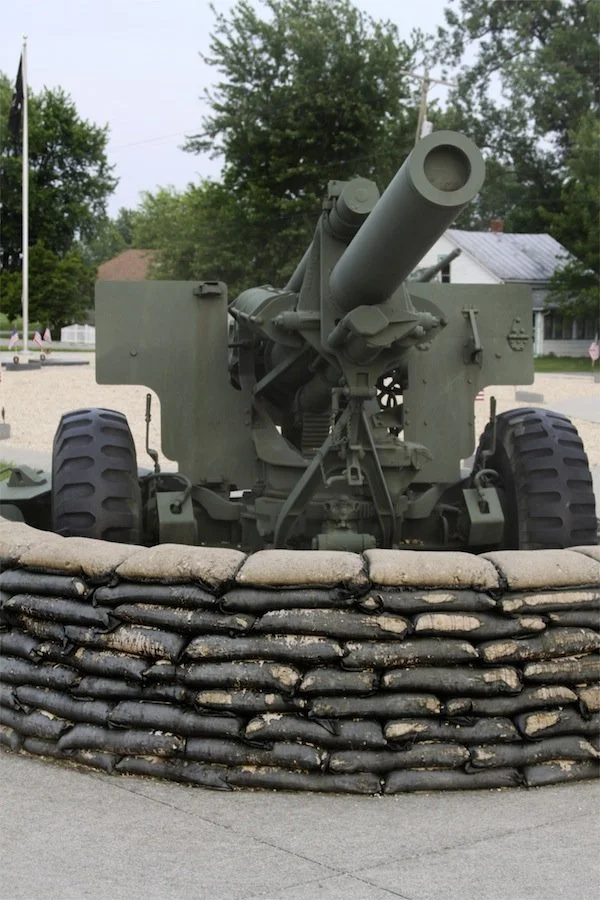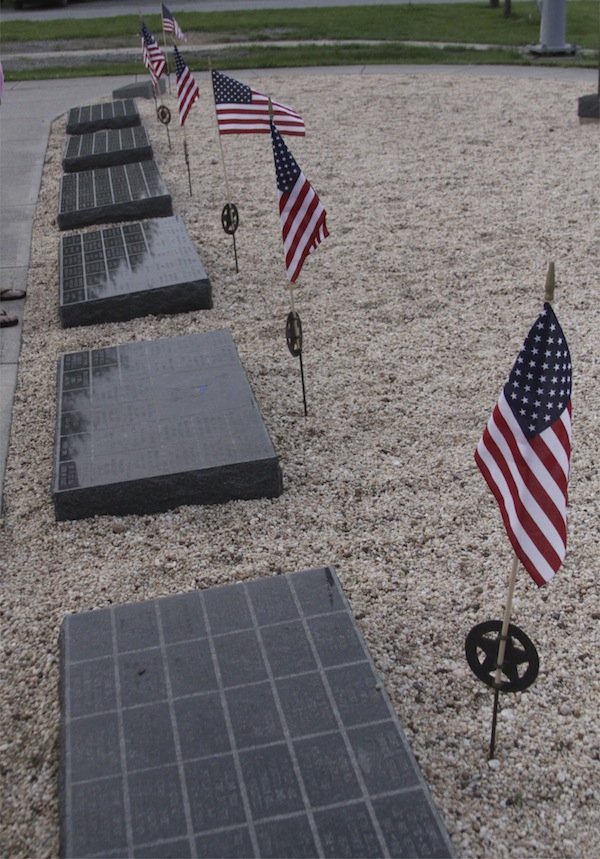Harrod Veterans Memorial Park
Harrod, Ohio | Est. 1997

M60 A3 TANK
The M60, the first American main battle tank, entered service in 1960. It succeeded the M48, providing increased operational range and mobility while requiring a minimum of refueling and servicing. It also incorporated improved armament.
The M60, and its predecessor the M47 and M48, are called the "Patton Tank", in honor of General George Patton. The M60 weighs 55 tons. A crew of four operate the tank which is armed with a 105mm main gun and three machine guns. It can reach a speed of 30 miles per hour and ford 48" of water. When equipped with a special fording kit it can go through up to 90" of water. The vehicle is powered by an air-cooled Continental diesel engine and an Allison transmission. The M60 is transportable on C5A aircraft.
The M60 A3 is an improved version of the original M60, mostly in the firing capabilities, through the use of laser and infrared technology. Chrysler (later General Dynamics) produced 10,326 M60 series tanks between the years of 1959 and 1978 at the Detroit Army Tank Plant.
The Auglaize Township Historical Society acquired the M60 A3 tank, serial no. 2451A on March 14, 1996 from Greenville, Kentucky. It was delivered to the Ohio National Guard Maintenance Shop #17 in Lima, Ohio. They performed the demilitarization required according to the Dept. of Defense Regulations and towed it to Harrod. It was then sandblasted, painted, and moved to its permanent home in the park.
155 mm M114 A2 Towed Howitzer
The M114 A1 A2 Howitzer was designed to provide the Army with medium range towed field artillery weapon. The M114 was in production during the 1940’s and 1950’s and builders included Western Austin, R. Hoe and Co., and the Rock Island Arsenal.
The M114 A2 weighs 17,4600 lbs. The elevation limits are 0 degrees to 65 degrees. The rate of fire is 4 rounds per minute for the first 3 minutes and 1 round per minute sustained firing. Its range is 2,700 meters minimum and 14,600 meters maximum. Its prime mover is 5-ton cargo truck. It can also be lifted by a CH 47 helicopter.
There are no M 114 A1/A2 howitzers in the active Army, however, they can still be found in a number of Reserve and National Guard units.
Manufactured in 1956, the Auglaize Township Historical Society acquired the M114 A2 155 mm artillery piece, serial no. 5474 in February 1995 from the Letterkenny Army Depot in Chambersburg, Pennsylvania.
UH-1 HELICOPTER
TAIL NUMBER 65-09587
The UH-1 Helicopter symbolized the war in Vietnam. Just the sound of a Huey will cause any Vietnam veteran to look skyward and think back in time.
The first production model Huey was put into service in 1959 and was built by Bell Helicopter. Thousands of Hueys were sent to South Vietnam. They were used for everything imaginable to include command and control, artillery spotters, spraying defoliants, dropping flares at night for illumination, hot meals, and mail. They were used to insert and extract troops in combat assaults or special operations. When equipped as gunships, they were capable of very close and intense fire support. Perhaps their greatest value, however, was realized when used for medical evacuation. There were more than 372,000 recorded medical evacuations made by helicopters in Vietnam.
Over 4,600 rotary wing aircraft were lost in Vietnam, claiming the lives of more than 3,500 pilots and crew members.
Bell Helicopter is still producing commercial versions of the Huey airframe today. The UH-1 helicopter carried approximately 220 gallons of fuel and could fly approximately 2 hours and 30 minutes. The empty weight of the UH-1 H was approximately 5,000 lbs. and the maximum weight was 9,500 lbs.. In the combat situation, the crew consisted of a pilot, co-pilot, crew chief, and door gunner. The aircraft could accommodate 9 passengers in addition to the crew. The external load was approximately 2,000 lbs. and the internal load approximately 4,000 lbs. Maximum cruising speed was 124 knots or 143 MPH. Combat situations very often demanded variances of these limits.
The Army purchased 65-09587 in December 1965. Originally a D model, it was sent to Vietnam and assigned to the 173rd Assault Helicopter Company.
Records show the aircraft as being in service with the 173rd AHC unit until August 25, 1967. On that date the aircraft was involved in a major accident. The information available is as follows:
Aircraft Commander: Warrant Officer D.F. Jordan
Pilot: J.D. Colquitt
Crew Chief: A. M. Scheer
Door Gunner: G. J. Glappa
Total Flight Hours at this point: 1509
Accident Summary: The engine failed as a loud noise was heard. Suspect that foreign damage caused the N-1 turbine failure. The aircraft was set down in a pineapple field in five-foot scrub brush. There were 0 injuries.
Having had personal experience in matters of this nature, it would be my opinion that this would be Army talk for “The loud noise heard was gunfire and the foreign damage incurred would have been in the form of bullets resulting in the aircraft being shot down”.
Close examination reveals that the aircraft does have several bullet holes that have been patched along with other major repairs.
Records further indicate that the aircraft was shipped back to the United States and it appears to have been in maintenance until May of 1968 when it was assigned to the 355th Aviation Co., 4th Army, Fort Sill, OK. In July of 1968 it was used in the Flight Training Center at Ft. Stewart, GA. In July of 1971 it was assigned to the National Guard. It shows up briefly in maintenance again at Corpus Christi, TX in 1975, and that is where it was probably converted to an H model.
The records we have available end in December 1975. At that time 587 had 4756 total hours logged. The Auglaize Township Historical Society took possession of the aircraft from the National Guard at North Canton, Ohio in April of 1996 for static display.
Today 587 proudly displays the markings and colors of the 176th Assault Helicopter Company, 14th Combat Aviation Battalion, Americal Division, Chu Lai, Republic of South Vietnam.
Helo Helicopter, a flying machine that remains airborne by beating the air around it into submission. Some believe that continued intervention by the Almighty is also required. Helo crews acknowledge the religious aspects of rotary wing flight with their slogan, "To hover is divine."







